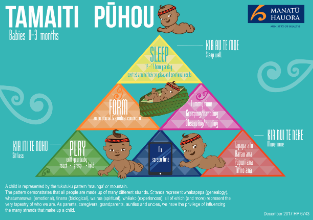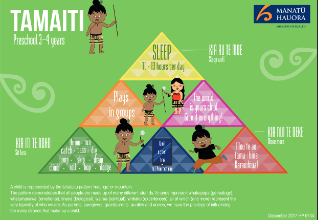The Importance Of Being Active In The Early Years
The Importance Of Being Active In The Early Years
Activity is just as important for your baby or young child as it is for older children - it helps them to learn and grow. Check out some resources to support young children to sit less, move more and sleep well.
Key points about keeping your preschool child active
- activity is just as important for your baby as it is for older children
- by helping your baby, toddler or young child to get active, you help them to learn and grow
- getting enough sleep each day is also really important for your preschooler
- sleep is good for your child's physical, emotional and social development
Why is movement and physical activity important for my preschool child?
Children learn from movement and physical activity. Movement is important for your young child's healthy brain development. Your child's early experiences of movement and physical activity can help them develop the skills, attitudes and confidence to be active throughout their life.
Are there any resources to help me encourage activity in my preschool child?
The Ministry of Health has developed some resources to support active play in children under 5. The aim is for young children to:
- sit less
- move more
- sleep well
Infographic posters
These infographic posters encourage:
- moving more throughout the day through regular play
- the right amount of sleep for tamariki under 5
In these posters, the child is represented by the tukutuku pattern 'maunga' (mountain). The pattern demonstrates that all people are made up of many different strands, with each strand representing who we are. The strands represent whakapapa (genealogy), whatumanawa (emotional), tinana (biological), wairua (spiritual), whēako (experiences). Kaiako, parents, caregivers, grandparents, aunties, uncles and whānau can all influence the strands that make up the child.
– English version (PDF, 7.4 MB)
– te Reo Māori version (PDF, 2.1 MB)
– English version (PDF, 6.5 MB)
– te Reo Māori version (PDF, 2.1 MB)
– English version (PDF, 2.2 MB)
– te Reo Māori version (PDF, 2.1 MB)
– English version (PDF, 7.1 MB)
– te Reo Māori version (PDF, 2.1 MB)
Mokomoko video
Ministry of Health Video - Transcript available at the Ministry of Health website.
He Pī Ka Rere uses the traditional movements of pūngāwerewere (spiders) and mokomoko (lizards) to inspire tamariki to be active. Children can use mokomoko and pūngāwerewere movements in games such as Simon says, races, and obstacle courses. Kai tipu kai tope is a game often played with these movements. One team are the kai tipu or planters. They must plant the seed for the tree or rakau to grow (by placing a cone, water bottle or similar upright). The other team are the kai tope who are chopping down the rakau (by knocking over the cone or bottle). Children can use the mokomoko and pūngāwerewere movements while playing the game.
Oriori – Huia Kaimanawa
You can play this oriori (lullaby) to your child as they go to sleep.
Listen to the oriori Huia Kaimanawa (3 mins, 19 secs)
Download the Huia Kaimanawa oriori (mp3, 7.5 MB)
Download the oriori (Tāne voice): Huia Kaimanawa (mp3, 7.6 MB)
Download the lyric sheet: Oriori (PDF, 4.2 MB)
Waiata – Te Rau Amokura
Introducing Māori activities, such as waiata, haka and poi are a good way of sharing pūrākau (ancestral knowledge).
Listen to the waiata: Te Rau Amokura (3 mins, 33 seconds)
Download the waiata: Te Rau Amokura (mp3, 8.1 MB)
Download the lyric sheet: Waiata (PDF, 2.8 MB)
Karakia – E Tipu E Rea
This karakia is designed for tamariki (children) to reach their potential as tangata. Within Te Ao Māori, the karakia is a mechanism to talk to the child about their future aspirations and adventures. Kaiako, parents, caregivers, grandparents, aunties and uncles can use these karakia words in any setting.
This page last reviewed 01 July 2022.
Do you have any feedback for KidsHealth?
If you have any feedback about the KidsHealth website, or have a suggestion for new content, please get in touch with us.
Email us now



